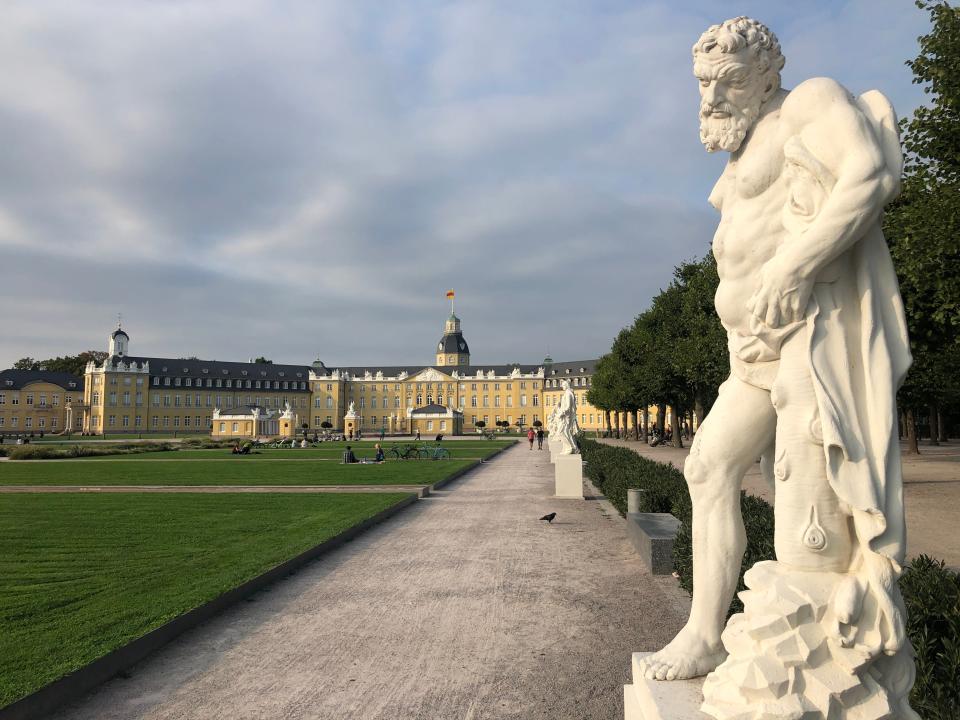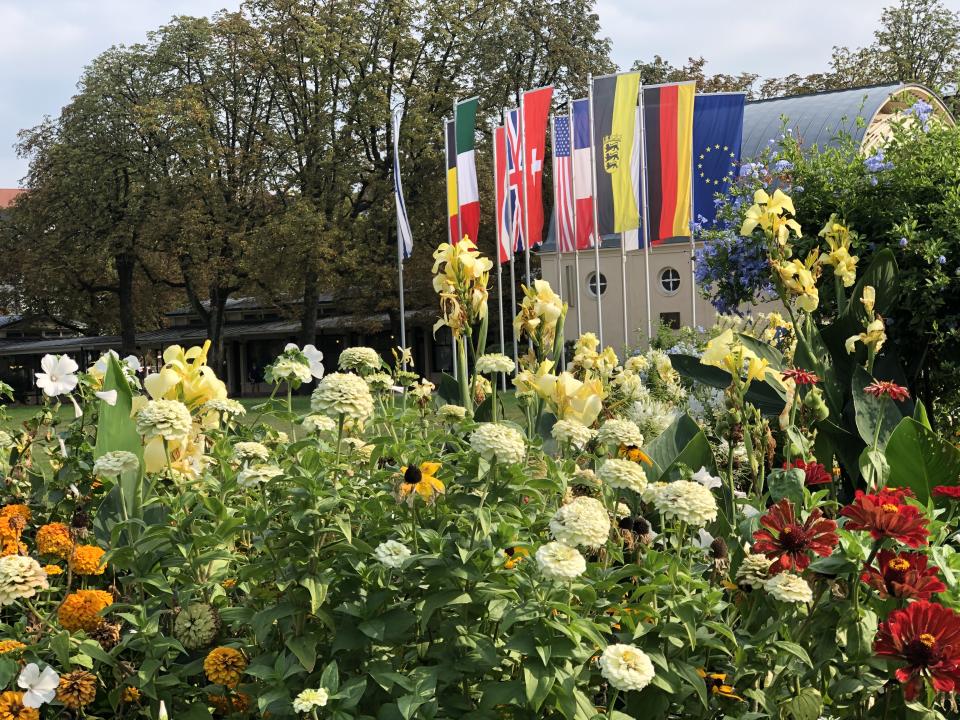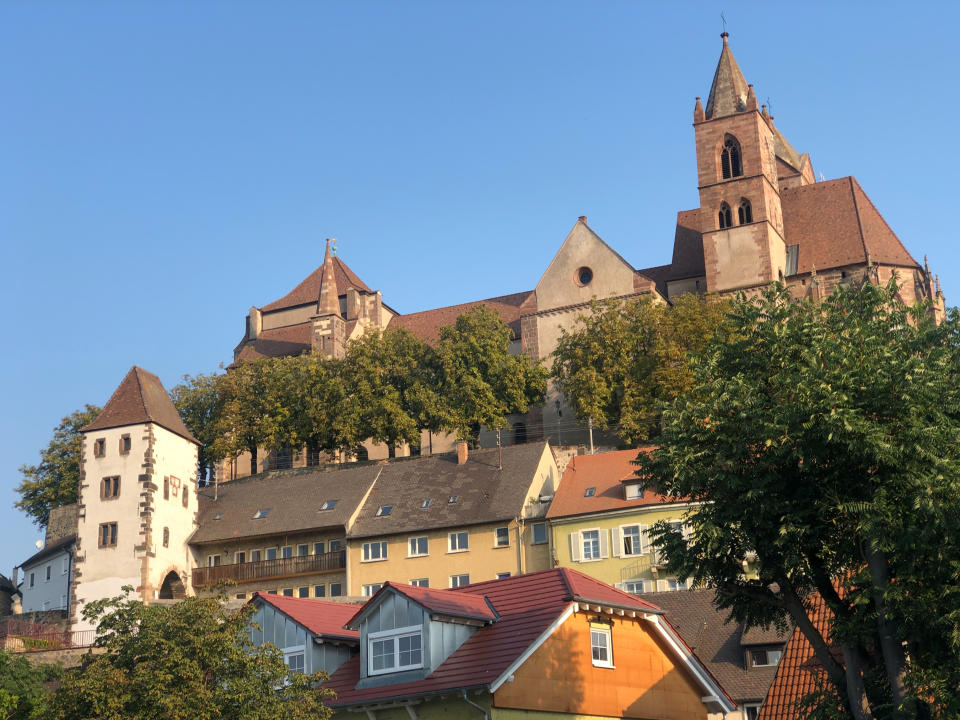Corona Curtain: exploring the new and invisible frontier through Europe

From the air, the city of Strasbourg is intensely alluring: threaded with canals, punctuated with grand buildings – public, private and pan-European – and blessed with le parc de l’Orangerie, one of the finest city gardens in France.
You can look, as I did from the window of a plane as it flew seductively low over Strasbourg. But you can’t touch down.
Along with costing one million lives and devastating economic activity, coronavirus has redrawn the map of Europe. For most of the second half of the 20th century, the continent was riven by the Iron Curtain. The ideological frontline between capitalism and communism ripped through the centre of Europe.
Frankfurt and Dresden, Munich and Prague, Vienna and Budapest: each pair was divided by a barrier designed to keep the peoples of the Eastern bloc from straying west.
Today, a corona curtain snakes across Europe. Unlike the brutal Cold War frontier, the 21st-century border is benign. If you cross it without express permission you are unlikely to lose your life. You will though, temporarily lose your liberty by being obliged to quarantine.
Starting in March, a tangle of travel restrictions began to extend across the Continent – everywhere apart from Britain, which removed all targeted measures designed to limit the spread of the virus.
By June, the UK had caught up with what the rest of the world was doing, and lurched from zero restrictions to the polar opposite: imposing two weeks of self-isolation upon arrivals from every country in the world apart from Ireland. No “border in the Irish Sea,” but a corona cocoon extending around the British Isles.
In July, the UK government performed another quarantine U-turn, decreeing that, after all, much of Europe was low risk. But steadily the list of European nations on the no-go list has lengthened: when Spain, France, Croatia and Portugal were deemed “unacceptably high risk,” the heart was torn out of the summer holiday market. Since then a scattering of other nations have been placed off-limits: Denmark, Iceland, the Czech Republic, Slovakia and all stations to Slovenia.
While a few rays of sunlight still illuminated the uplands of Europe, I set off to explore the “safe” side of the corona curtain.

The plane touched down a mile from the Rhine. Western Europe’s mightiest river delineates the corona curtain, from a British perspective, for 100 miles – separating France, which is high risk, from low-risk Germany.
The airport: Karlsruhe/Baden-Baden, giving two implausibly grandiose cities for the price of one. Karlsruhe provided the urban model for Washington DC, with grand avenues converging on a single point: Karlsruher Schloss.
The final half-mile to this palace is devoted to gardens to give the sightseer the full benefit of a creamy Baroque facade that extends its arms and fills the horizon.
Baden-Baden, so good they named it twice, competes with its near-neighbour for sheer good looks. The self-described Summer Capital of Europe fills a valley with indulgence: from pleasure palaces devoted to coffee and cakes to lavish baths that exploit the town’s hot springs – and, it is claimed, counteract the effects of gout and rheumatism.
Assuming you suffer from neither of these unfortunate conditions, you may be ready for a hike. But careful where you stray.
At a twist in the Rhine beyond Rheinmunster, a small ferry lilts tempting in the water – awaiting pedestrians and cars in search of a free ride across the river to Drusenheim. Were you to take the bac, as it is known, self-isolation beckons on your return to the UK. Even if you go there and back without stepping on French soil, you will be deemed to have mingled in France.
Appenweier railway station, just down the Rhine valley line on the German side, serves a small village but has two remarkable features.
The first is that the connection between platforms requires an absurd number of stairs and a journey of considerable distance beside a public road. The second is that this is where the line of the Orient Express from Paris to Istanbul meets the main north-south route through present-day Germany, from Hamburg and Frankfurt to Basel – the Ha-Fra-Ba line.
The last Orient Express passed through a long time ago, and the line to Paris is now served by a single carriage – a bus on wheels – that splutters towards Strasbourg.
Stop short of the main attraction at the small German town of Kehl. From outside the station, an international tram stands ready to take you across the Rhine. Instead, walk beside its tracks up on to the elegant arc that bears it over the river.
From the German half, you can see four bridges within half a mile, a number unmatched anywhere along the Rhine.
The older pair are the rail and road crossings, both rebuilt after the war. The one you are on is a 21st-century newcomer, constructed in a spirit of unity – marking a new age when borders become opportunities, not barriers.

In the 20th century traffic would always dry up in the last few kilometres before an international frontier. But at the main crossing point between eastern France and southern Germany there’s a constant flow of cars, trucks, trams, trains and bikes making a mockery of the politicians’ careful boundary drawing.
The symbol here is the Passarelle des Deux Rives: a footbridge connecting park land on the sides of the divide, bringing people together. Or, in your case and mine, not.
An invisible frontier, a force field powered by legislation, keeps British travellers in Germany – rapidly becoming a last refuge as neighbouring nations have had quarantine exemptions erased.
The corona curtain brings significant financial penalties for the traveller.
This year Luxembourg became the first country in the world to provide free nationwide public transport. A blissful, budget-preserving 50-mile journey by bus and train could take you from the northernmost point in the Grand Duchy to the southeastern corner – better known as Schengen.
The village where Luxembourg meets France and Germany was chosen for its geo-political significance – the ideal place to sign a treaty designed to create a Europe without frontiers.
The 35th anniversary of the Schengen Agreement passed without comment in June this year. One of the countless advantages of erasing borders is that consumers can avail of international competition. On the night I stayed in the riverside town of Breisach, I paid €100 (£92) for a room, when a French hotel tantalisingly nearby wanted only €60 (£55).
Breisach turned out to be priceless. A journey along the Rhine is flanked by highlands on either side: the Black Forest to the east, the Vosges to the west. The valley itself is largely empty of natural features. But Breisach is the exception.
The approach is most agreeable, along a meandering branch line that swerves between the vineyards as the autumn sun anoints the grapes with a final degree of ripeness.
From the town’s humdrum modern skirts, a cobbled lane leads to a hilltop huddle of cottages dominated by the cathedral. The spectacular views had military advantages. As Jerome K Jerome remarked over a century ago: “Whoever the war was between, and whatever it was about, Alt Breisach was bound to be in it.
“Everybody besieged it, most people captured it; the majority of them lost it again; nobody seemed able to keep it.
"Whom he belonged to, and what he was, the dweller in Alt Breisach could never have been quite sure.”
The modern dream of a European order of peace, unity and prosperity is on hold. But the final stop in Germany, Weil-am-Rhein, has plenty of symbolism.
Another international tram, number 8, starts its journey at the railway station. The destination is Basel in Switzerland, and in another act of unity a tram stop has been built on the actual frontier itself.
“To avoid two weeks of self-isolation, British visitors should alight from the rear of tram number 8,” the announcement didn’t actually say. But it was true. Alight at the back, and you are still safely in Germany; get off at the front and you have left the European Union, and a country still regarded as low risk, and instead are in the danger zone of Swiss territory.
It was late. I stayed back, hopped off, and walked towards the great natural frontier of the river. Within five minutes I was almost halfway across the Rhine again, this time nudging up against French territory. Yet in the darkness, all I could see was humanity.
Travel essentials
Getting there
Simon Calder paid £5 for a Ryanair flight from Stansted to Baden Baden, and €42 for an easyJet flight from Dusseldorf to Gatwick.
Getting around
A regional Baden-Württemberg day ticket, allowing unlimited travel on all public transport except express trains throughout the region costs €24 (£22) for one person or €30 (£27) for two.
Read more
Will new quarantine rules scupper my Poland trip?
Tui demands coronavirus testing to cut quarantine obligations

